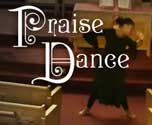
Praise God with lyre and harp, praise God with drums and dancing… (Psalm 150)
About Praise Dance
Praise/worship/biblical/Davidic dancing is not only a means of worship, it can enhance the worship experience of others, as they contemplate space, time, rhythm, interconnection, and the fleetingness of the moment.
Does the concept seem new? It isn't. Thousands of years ago, in ancient Judaism and then early Christianity, it was part of worshipful prayer[1]. There are many biblical references to dancing in praise of the Lord[2]. Then, during the time of Reformation, it was suppressed along with other bodily expression, as unseemly. We have experienced a resurgence in the past century, with liturgical dance serving many purposes, including witnessing to faith, inspiring congregants, challenging our thinking, or acting as a form of prayer.
Styles of dance are as wide-ranging as the dancers themselves, including: spontaneous, choreographed, modern, ballet, lyrical, African, clog, Davidic, and hip hop. Dancers can be few or many. Their attire can be simple or ornate. They can have props – streamers, banners, tambourines, flutes, and such – or have none. Inspiration frees the dancer of limitations, so this genre is continually growing and changing.
Below is our example. Dancer Rena Jones-Guidry of the Providence Baptist Church provides an original interpretation of a song that speaks to the promise of a second chance:
Filmed at Providence Baptist Church and edited at Elfenworks Productions, LLC. Dancer: Rena Jones-Guidry. Filmed by: Jennifer Thomas, for Elfenworks Productions, LLC. Mastering: John Watkins, for Elfenworks Productions, LLC. Copyright 2011 Elfenworks Productions LLC. All rights reserved. For music credits, please see the liner notes of the CD "Love is Here" by Commodore Callahan, at elfenworksproductions.com/commodorecallahan.
Want to try choreographing Resurrection for your worshipful Praise Dance service? Praise Dance Choreography Instructions

